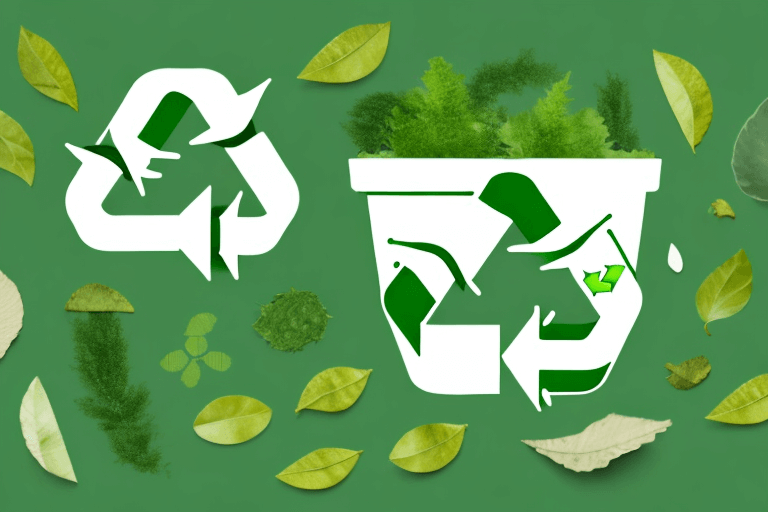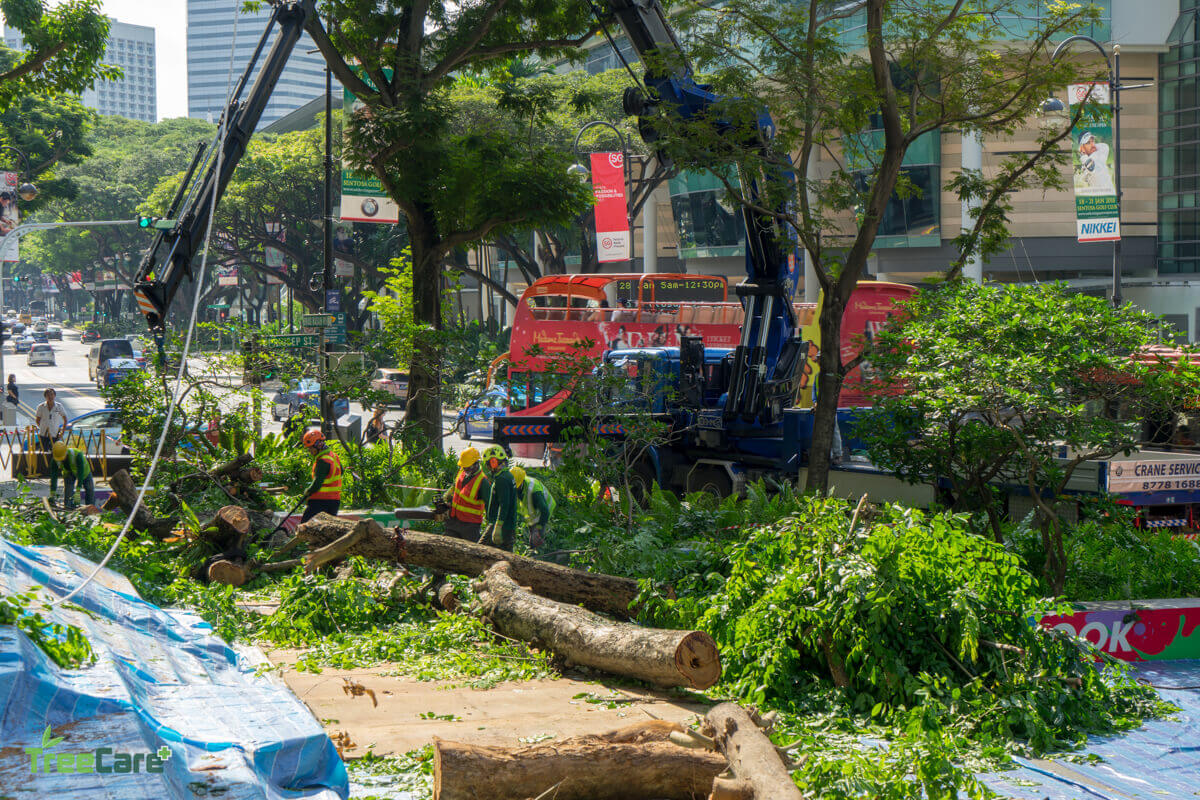Trees are an invaluable part of our ecosystem, providing shade, oxygen, and beauty to our surroundings. However, as a tree owner, you may find yourself facing the daunting problem of green waste. In this ultimate guide to green waste removal, we will explore the importance of removing green waste, the process involved, and the tools required. Whether you are a seasoned tree owner or a novice in the world of gardening, this guide is a must-read to ensure the health and beauty of your trees.
Understanding Green Waste: What It Is and Why It Matters
Before we delve into the process of green waste removal service, it is essential to understand what green waste is and why it matters. Green waste refers to organic waste derived from trees, plants, grass clippings, and other garden trimmings. It includes branches, leaves, twigs, and small trunks that are generated during tree maintenance.
Green waste is a natural byproduct of gardening and landscaping activities. As we tend to our gardens, we inevitably produce a significant amount of organic waste. This waste, if not properly managed, can have detrimental effects on the environment and our overall well-being.
Defining Green Waste
Green waste encompasses both natural and man-made materials. Natural materials include fallen leaves, dead branches, and cut grass. These materials are biodegradable and can break down over time, returning valuable nutrients to the soil. Man-made materials, on the other hand, consist of discarded garden decorations, plastic pots, and non-organic debris. These materials do not decompose easily and can pose a threat to the environment if not disposed of properly.
When we talk about green waste removal, we are primarily concerned with the proper disposal and recycling of organic materials. By separating natural green waste from man-made waste, we can ensure that the organic materials are recycled and reused, while the non-organic waste is disposed of responsibly.

The Environmental Impact of Green Waste
The improper disposal of green waste can have severe environmental consequences. When left to decay on the ground, it can create favorable conditions for pests and diseases, affecting the overall health of your trees. Rotting green waste can attract insects and rodents, leading to infestations that can spread to other areas of your garden.
Furthermore, burning green waste releases harmful pollutants into the air, contributing to air pollution and climate change. The smoke and emissions from burning organic materials can contain harmful chemicals and particulate matter, which can have adverse effects on air quality and human health.
Proper removal and recycling of green waste can help mitigate these impacts. When green waste is collected and processed at specialized facilities, it can be turned into valuable resources such as compost and mulch. Composting green waste not only reduces the amount of waste going to landfills but also enriches the soil, improves water retention, and promotes healthy plant growth.
By understanding the environmental impact of green waste and taking the necessary steps to manage it responsibly, we can contribute to a healthier and more sustainable environment. So, the next time you trim your trees or tend to your garden, remember the importance of proper green waste removal.
The Importance of Green Waste Removal for Tree Owners
As a tree owner, you may wonder why it is crucial to remove green waste from your property. Let’s explore two significant benefits that green waste removal provides for you and your trees.
Health Benefits for Your Trees
Regular removal of green waste helps maintain the health of your trees. When fallen leaves and branches accumulate around your trees, they create a breeding ground for pests and diseases. This can lead to a decline in the overall health and vigor of your trees. By removing this organic matter promptly, you can prevent infestations and maintain the vitality of your trees.
Furthermore, when green waste is left to decompose around your trees, it can release harmful chemicals into the soil. These chemicals can negatively impact the nutrient balance and pH levels of the soil, making it less conducive for healthy tree growth. By removing the green waste, you ensure that your trees have access to clean and nutrient-rich soil, promoting their overall well-being.
Additionally, the accumulation of green waste can create a moist environment around the base of your trees. This excess moisture can lead to root rot and other fungal diseases, which can be detrimental to the long-term health of your trees. By regularly removing the green waste, you help maintain proper drainage and airflow around the tree roots, reducing the risk of fungal infections and promoting healthy root development.

Enhancing Your Landscape’s Aesthetics
In addition to protecting your trees’ health, green waste removal also enhances the aesthetics of your landscape. Accumulated green waste can create an unsightly appearance, detracting from the beauty of your property. Fallen leaves and branches scattered across your lawn can give a neglected and unkempt impression.
By removing green waste, you can create a clean and visually appealing environment that showcases the natural beauty of your trees. A well-maintained landscape not only adds value to your property but also provides a welcoming and inviting atmosphere. Whether you have a residential garden or a commercial space, the removal of green waste helps create a positive first impression on visitors and passersby.
Moreover, green waste removal allows you to take control of the overall design and layout of your landscape. By eliminating unwanted debris, you can highlight the unique features of your trees and create focal points within your outdoor space. This can be especially beneficial if you have ornamental trees that serve as the centerpiece of your garden or if you want to create a specific theme or ambiance.
Furthermore, by removing green waste, you can ensure that your trees have ample space to grow and flourish. Over time, fallen leaves and branches can accumulate, limiting sunlight and airflow to the lower branches and foliage. By clearing away this debris, you allow your trees to receive the necessary sunlight and air circulation, promoting healthy growth and preventing the development of weak or spindly branches.
In conclusion, green waste removal is essential for tree owners to maintain the health and aesthetics of their landscape. By regularly removing fallen leaves and branches, you can prevent pest infestations, diseases, and soil imbalances, ensuring the vitality of your trees. Additionally, green waste removal enhances the overall appearance of your property, creating a visually pleasing environment that showcases the natural beauty of your trees. So, make it a priority to remove green waste from your property and enjoy the numerous benefits it brings to you and your trees.
The Process of Green Waste Removal
Now that we understand the importance of green waste removal, let’s explore the step-by-step process involved in efficient waste management.
Green waste removal is a crucial aspect of maintaining a clean and healthy environment. It not only helps in keeping our surroundings aesthetically pleasing but also plays a significant role in promoting sustainability. By properly managing and disposing of green waste, we can reduce pollution, conserve resources, and contribute to the overall well-being of our planet.
Initial Assessment and Planning
Before beginning the removal process, conducting a thorough assessment of your green waste is essential. This assessment involves identifying the type and quantity of waste, as well as any potential hazards. By understanding the nature of the waste, you can determine the appropriate tools and equipment required for the job.
Once the assessment is complete, it is time to create a detailed plan outlining the steps for removal. This plan should include considerations such as safety measures, time allocation, and waste disposal methods. By having a well-thought-out plan, you can ensure a smooth and efficient green waste removal process.

Execution and Clean-Up
With your plan in place, it’s time to execute the removal process. Start by gathering the necessary tools and equipment, such as pruning shears, hand saws, and gloves. These tools will enable you to handle the green waste effectively and safely.
Begin the removal process by focusing on the larger branches or trunks. Carefully cut them into manageable pieces, making it easier to handle and transport. Once the larger pieces are removed, move on to the smaller twigs and leaves. Use pruning shears or hand saws to trim and collect them efficiently.
As you remove the green waste, it is essential to sort it into piles, separating organic materials from non-organic debris. This segregation is crucial for proper waste disposal. Organic waste, such as leaves and branches, can be composted or recycled. Composting not only reduces the amount of waste sent to landfills but also creates nutrient-rich soil that can be used for gardening and landscaping purposes.
On the other hand, non-organic debris, such as plastic bags or metal objects, should be disposed of responsibly. These materials can be recycled or taken to designated waste management facilities. By disposing of non-organic debris properly, we can prevent it from polluting our environment and causing harm to wildlife.
Finally, after the green waste has been removed and properly disposed of, it is crucial to thoroughly clean the area. This step ensures a tidy finish and eliminates any remaining debris or potential hazards. By leaving the area clean and well-maintained, you contribute to the overall cleanliness and safety of your surroundings.
Green waste removal is a continuous process that requires regular attention and effort. By following the proper steps and implementing efficient waste management practices, we can contribute to a greener and more sustainable future.
Tools and Equipment Needed for Green Waste Removal
Depending on the scale of your green waste removal, you may require specific tools and equipment. Let’s explore the options for both small-scale and large-scale green waste removal.
Basic Tools for Small-Scale Removal
For small-scale removal, you will need basic tools such as pruning shears, loppers, and a garden rake. These tools are suitable for removing small branches, twigs, and leaves. Ensure that you have a sturdy wheelbarrow or garden bags to collect and transport the waste efficiently.
Heavy-Duty Equipment for Large-Scale Removal
If you have a large garden or multiple trees to maintain, heavy-duty equipment becomes essential. Consider investing in a wood chipper or a shredder to process larger branches and trunks into mulch or compost. Additionally, a utility trailer or truck may be necessary for transporting the significant amount of waste generated during large-scale removal.
Hiring Professionals vs. DIY Green Waste Removal
Now that we have explored the process and tools required for green waste removal let’s discuss whether DIY removal or hiring professionals is the right choice for you.
When to Consider Professional Services
If you have limited time, lack the necessary tools, or require assistance in handling large-scale green waste removal, hiring professionals is a sensible option. Their expertise and equipment can ensure a thorough and efficient removal, saving you time and effort.
Tips for DIY Green Waste Removal
If you prefer a hands-on approach or have a smaller green waste removal project, DIY removal can be a rewarding experience. Remember to prioritize safety by wearing protective gear, using the appropriate tools, and carefully following the removal process outlined in this guide.
By taking the time to remove green waste properly, you are ensuring the health and longevity of your trees while contributing to a cleaner and more beautiful environment. Whether you choose to hire professionals or take on the task yourself, this guide has equipped you with the knowledge and tools necessary for successful green waste removal. Apply these practices regularly, and you will enjoy the rewards of a well-maintained landscape and thriving trees for years to come.
More to read: Transforming Your Outdoor Space with Expert Stump Grinding

